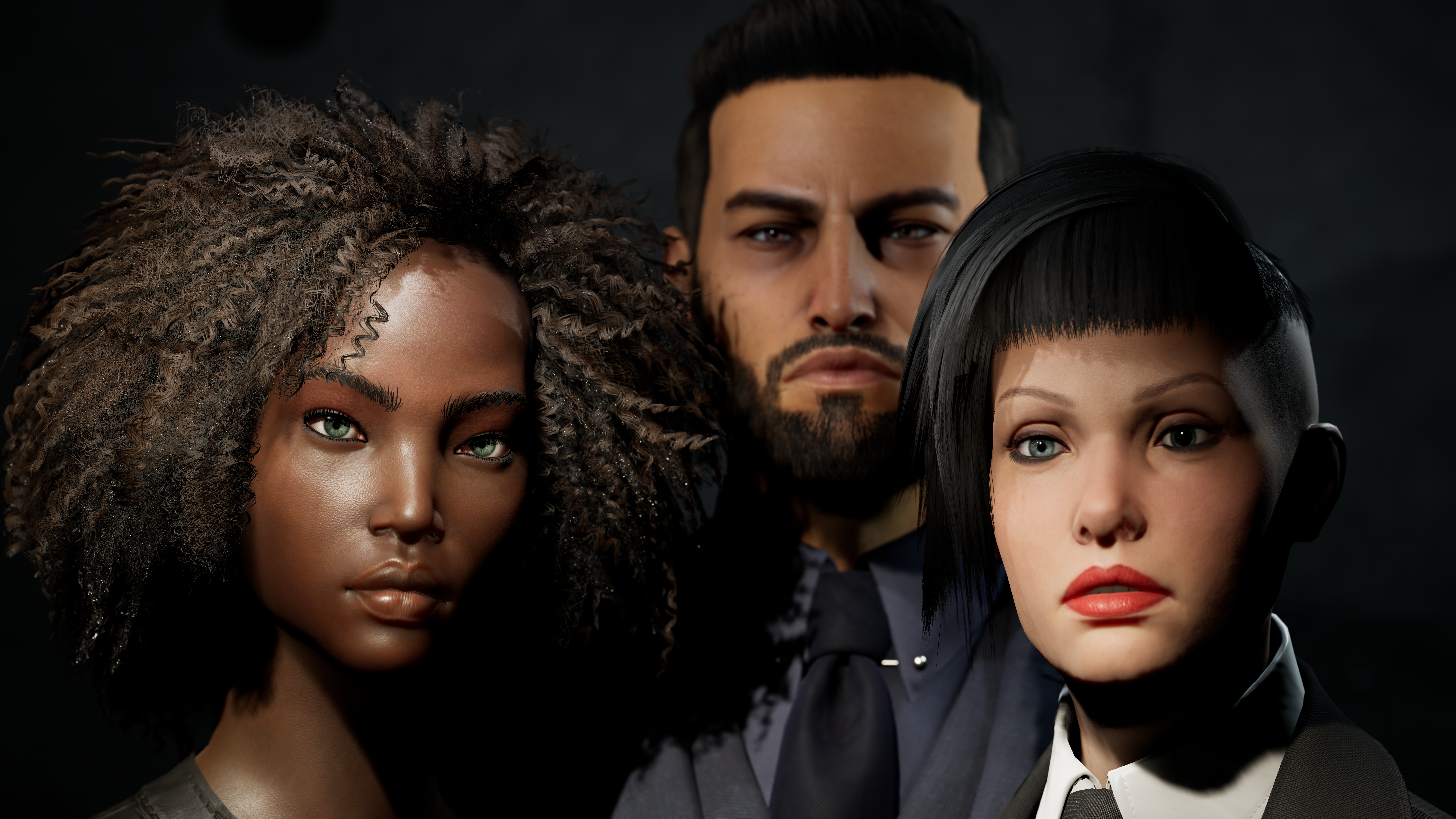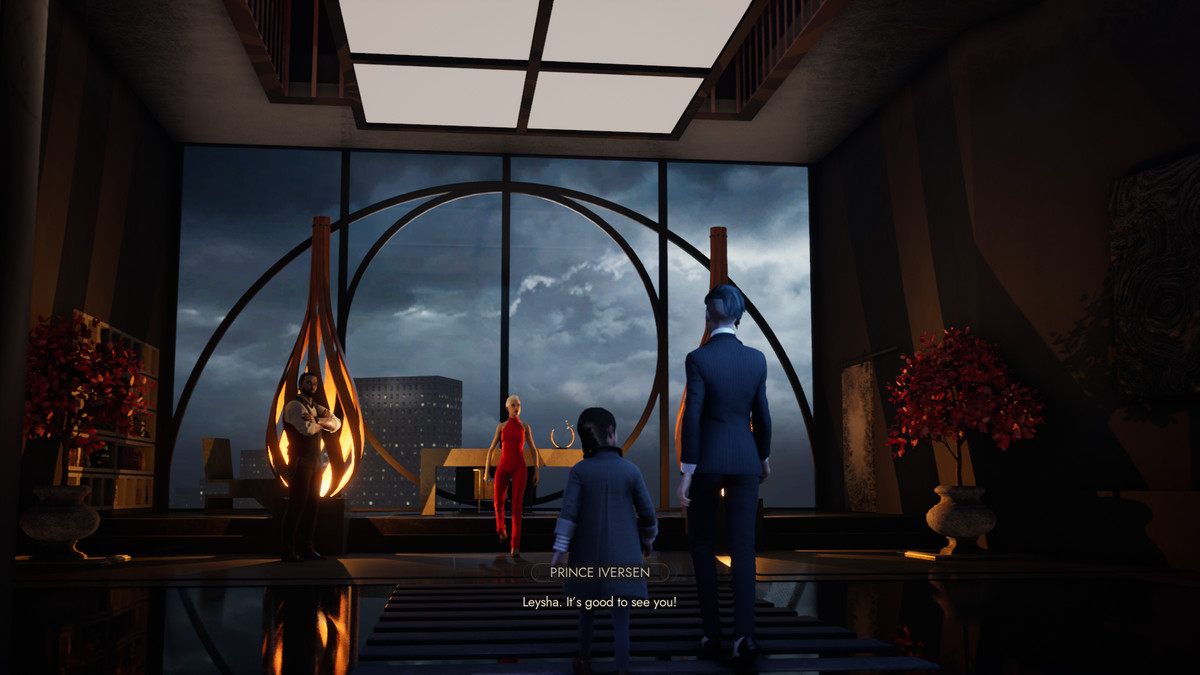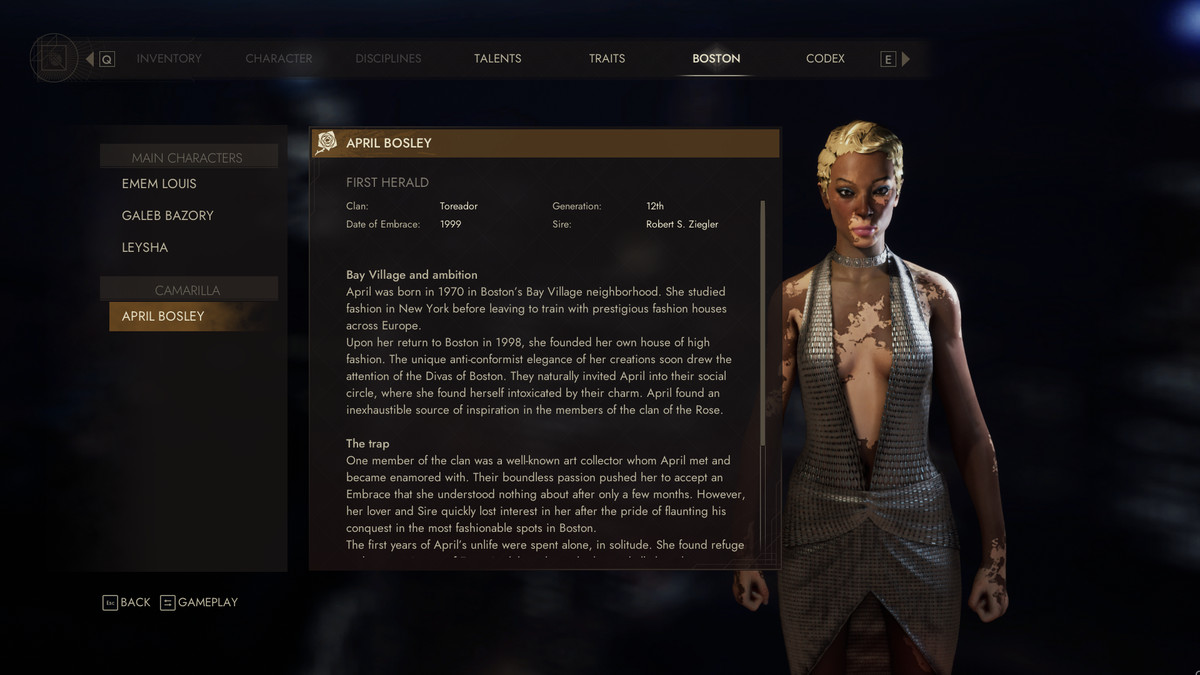Vampire: The Masquerade – Swansong review: a gleeful RPG soap opera

In senior year at my strict religious boarding school, watching Passions was an afternoon ritual. Beyond the basic soap opera premise of rival families getting messy, the iconic series had everything for a restless teen: suspense, melodrama, shamelessly imaginative comedy, awful sex, and campy supernatural storylines (including witches and warlocks — it was, after all, set in New England). Our febrile minds projected cartoonish power fantasies and petty grievances onto its absurd archetypes — the rebel, the dark horse, the struggling parent. Passions became a daily mainline to a hotter, more fantastical world, and it was awesome.
I didn’t realize there was a Passions-shaped hole in my adult life until last week, when I played my first Vampire: The Masquerade game: Swansong. When the first Vampire tabletop RPG was released in 1991, it stood out in a genre where vampires were usually monsters to be killed. But it’s a post-Twilight world now (sorry, Anne Rice), and the idea of the undead secretly living among us is a common fictional conceit. Upon booting up Swansong, I had no idea what to expect. I spent my first few hours slowly poring over the in-game codex and staring blankly at my character sheets.
Nineteen hours later, it turns out that baby’s first Vampire game was a gleeful return to all of the good stuff I didn’t know I missed: courtly intrigue, indulgent posturing, and coldblooded betrayal, but this time, with fangs. There’s no combat, so everything boils down to conversational dominance and manipulation. It seems that the relative isolation and sobering reality of the pandemic have created an itch for the dramatic frivolity that fueled my high school afternoons.

Image: Big Bad Wolf/Nacon via Polygon
Swansong takes place in the World of Darkness RPG universe, where vampires (“Kindred”) juggle soap opera-scale power grabs, mind games, and existential crises. Most Kindred follow the Masquerade, a survival protocol maintained by the ruling Camarilla faction to stay hidden from mortals; humans are usually livestock or slaves, and in-game documents highlight the Camarilla’s pragmatic interests in environmentalism for the sake of their prey’s health. Atop this food chain is the city’s Prince, supported by a council known as the Primogen; at the bottom are “thin-bloods,” whose weak powers are the supposed result of their generational remove from the First Vampire, Caine.
Swansong opens with the Boston Camarilla in panic mode, and introduces three playable Kindred: Emem, Galeb, and Leysha. Someone has called a Code Red (the emergency lockdown procedure). Kindred have gone missing at an important party, nobody knows the details, and we’ve been summoned to help Boston’s Prince, Hazel Iversen, the personification of Gaslight, Gatekeep, Girlboss in a red jumpsuit. She gives each character missions (“scenes”) and clearly has a hidden agenda of her own.
Emem, Galeb, and Leysha share the same base mechanics: a Willpower bar that determines how they interact with others and a Hunger bar that denotes the need to feed (at max Hunger, their next interaction will most likely jeopardize the Masquerade). Kindred drink from live humans (“vessels”), which must be done discreetly in a limited number of safe zones. It’s also bad form to drink the vessels to death. I turned cool, sophisticated Emem into a habitual rat eater — a gross survival decision that increased her Suspicion meter and made her later interactions more challenging. (I never fully got the hang of Suspicion — it’s supposed to indicate how much you stick out through mistakes and gaffes, but on my playthrough with the most dire screw-ups, I had the lowest Suspicion yet.)
Emem, Galeb, and Leysha all have elaborate backstories and core personalities, and each belongs to a different clan (Toreador, Ventrue, and Malkavian, respectively). Through character builds, I’m allowed to determine how they approach problems and conversations. On my second playthrough, I opted for the custom build for full control over my Character and Discipline sheets. Character covers stat-like abilities (like Persuasion, Technology, and Deduction) that affect conversations, confrontations, and interactions with objects. Discipline covers clan-specific Kindred skill trees, like Auspex (augmenting senses and seeing memories) and Celerity (slowing time or Blinking from one place to another).
There’s a ton of lore to absorb, but it’s manageable if you’re used to navigating jargon-heavy genre fiction (hard sci-fi trained me well for this). Another option is to ignore the detailed backstories and play blind, but then you’d miss out on one of the game’s most formidable resources: a vividly detailed codex that updates as new story elements are revealed. In retrospect, I should have referred to it more, especially as a mid-conversation cheat sheet. I started to internalize foundational World of Darkness facts, like the stigma around the insane Malkavian clan, the Ventrue sense of superiority, and the role of British imperialists in New England Kindred politics.
My first Galeb was heavy on Intimidation and Psychology, a role-playing choice I made based on his voice — crisp enunciation and condescending disdain and everything you’d expect from a descendant of Ottoman royalty. He should have dominated most conversations, but at critical points it was almost impossible to squeeze information out of an NPC, even when I restarted, tweaked my stats, and used Willpower to “focus” and beef up my abilities. Seemingly weak characters turned out to have unhinged levels of focus and easily overcame his assertions. Galeb’s final showdown was a pathetic indictment of my unfamiliarity with the game systems, hinting at synergies between Character and Discipline that I have yet to master. I was wracked with guilt when I got him killed (which is absolutely possible in the final act of the game).

Image: Big Bad Wolf/Nacon via Polygon
After my first playthrough, I noticed that the game seems to lean heavily on Education and Deduction — multiple mid- and late-game scenes call for at least 2-3 points in each. I found Deduction especially helpful as a newbie, which slightly undercuts the sense that any character build is viable for beginners. Security and Technology skills (the ability to open safes and hack into computers) can be ignored in favor of scouring the environment for keys and clues. In that case, success depends on good old Education and Deduction, or how much information you can get through social engineering. I occasionally got annoyed with characters who lacked the right skills to meet certain checks, but therein lies the rub of narrative RPGs: There’s no such thing as a perfect playthrough — participation in Swansong’s systems necessitates that you also accept failure.
Swansong’s puzzles are mostly fun adventure-game staples — manipulating objects, identifying patterns, and simple decryption, to name a few — with some truly frustrating exceptions and a good dose of bugs. Things get especially tedious in a prison scene involving Emem. There are concentric ring puzzles that are initially compelling but quickly turn into a nightmare. Mechanical puzzles with moving parts really need a clear locking mechanism, especially when said moving parts are fiddly and don’t stay in place.
The game also bugged out on my attempts to access a hidden prison cell, even though I’d found multiple solutions to the final ring puzzle; the solution turned out to be one where the correct nodes didn’t even line up, and I only managed to solve it after (I assume) a patch to adjust their alignment. Emem’s Blink skill is also frustrating to use when there’s platforming involved; Blinking onto a pillar then wildly swiveling the camera around to find other possible destinations on a timer is not great. There’s also the heinous valve puzzle in Leysha’s Red Salon scene that had me screaming internally before I gave up.

Image: Big Bad Wolf/Nacon via Polygon
Trying to figure out many of the jankier puzzles meant spending a lot of time neurotically poking around each scene. But it gave me a special appreciation for the way Swansong imbues its environments with humor. All the book skins in the game are a joy — I’m a huge fan of the author John Game. In one of Galeb’s Long Island secret base scenes, I had to get an old religious book using an automated retrieval system — even though I was calling up books from centuries past, physics textbooks or English dictionaries frequently came rolling out on the conveyor belt. There’s also a treasure trove of pop culture jokes, from The Shining’s orange carpet to a low-key Zodiac Killer cameo; Leysha’s doctor, Richard Dunham, is a dead ringer for Michael Shannon, and the game’s ultimate villain resembles a fanatical James Cromwell in full Vatican Gone Wild mode.
Like any good soap opera, Swansong does an artful job at probing psychological issues — trauma, grief, regret — without losing its focus on entertainment. And like any great soap opera, it also creates a noxious love-hate relationship with twists (and in this case, uneven mechanics and systems) that you can’t control. I’m not sure whether my initial feelings around Swansong stem from a lifelong weakness for toxic Machiavellian soaps, or because it’s a genuinely well-crafted fantasy that plays on (ironically) human needs to be accepted, forgiven, or trusted. It’s probably a bit of both.
At the end, with two-thirds of my crew dead (oops), I didn’t feel a sense of finality, but the immediate need to go again, janky puzzles, bugs, and all. My relationship to Swansong has become almost like my ritual appointment with Passions — until I fully exhaust the entire story, I need my dose of ridiculous people making ridiculous decisions, and the nuclear fallout of their mistakes.
Vampire: The Masquerade – Swansong will be released May 19 on Windows PC, PlayStation 4, PlayStation 5, Xbox One, Xbox Series X, and later, on Nintendo Switch. The game was reviewed on Windows using a pre-release download code provided by Nacon. Vox Media has affiliate partnerships. These do not influence editorial content, though Vox Media may earn commissions for products purchased via affiliate links. You can find additional information about Polygon’s ethics policy here.
Source: www.polygon.com